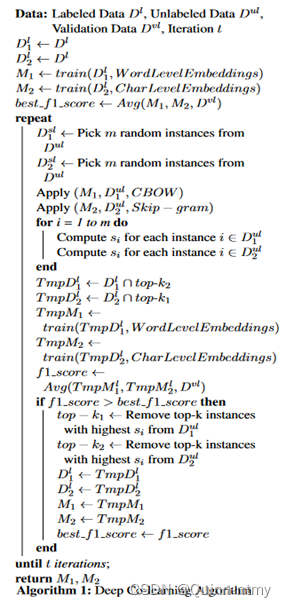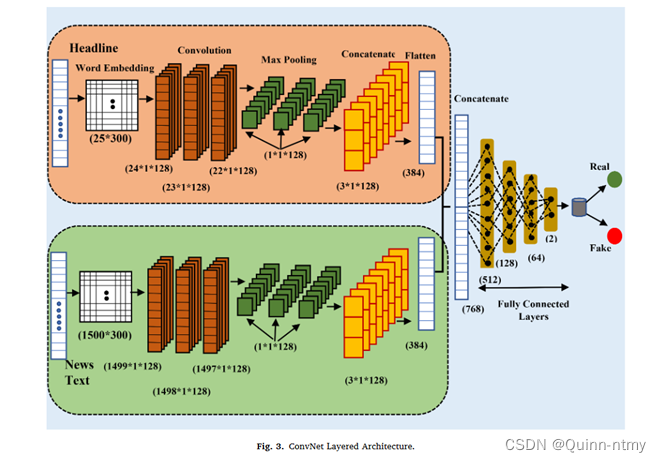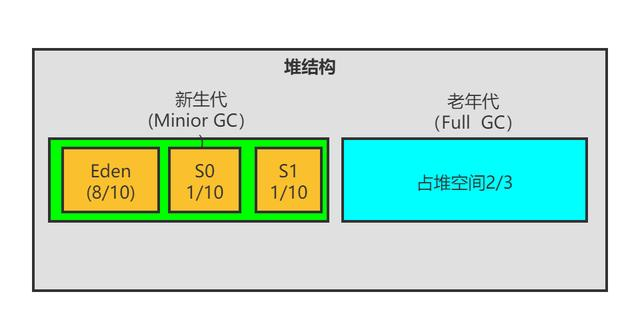当前位置:网站首页>深度学习之-01
深度学习之-01
2022-08-10 04:22:00 【kyccom】
深度学习之-01
深度学习近来火爆, 正好C站也有相关活动,参与了大神K同学的【21天学习挑战赛】K同学啊 邀你参加深度学习研讨班,趁下班时间练练手,把fashion服装数据集跟着博主抄了一下作业。
下载数据
import tensorflow as tf
from tensorflow.keras import datasets, layers, models
import matplotlib.pyplot as plt
(train_images, train_labels), (test_images, test_labels) = datasets.fashion_mnist.load_data()
数据下载好后, 来看一下数据集的形状:
train_images.shape, train_labels.shape, test_images.shape, test_labels.shape
结果如下:
((60000, 28, 28), (60000,), (10000, 28, 28), (10000,))
目前的像素点值在0~255之间,下面将数据进行简单归一化
train_images, test_images = train_images/255.0, test_images/255.0
归一化后的像素点的数据值将在0~1之间, 适合做学度运算
下面给数据增加维度,以适合涨量运算
train_images = train_images.reshape((60000, 28, 28, 1))
test_images = test_images.reshape((10000, 28, 28, 1))
train_images.shape, train_labels.shape, test_images.shape, test_labels.shape
增加维芳后的数据形状如下:
((60000, 28, 28), (60000,), (10000, 28, 28), (10000,))
数据集中对应的服装名称如下表
class_names = [‘T_shirt/top’, ‘Trouser’, ‘Pullover’, ‘Dress’, ‘Coat’, ‘Sandal’, ‘Shirt’, ‘Sneaker’, ‘Bag’, ‘Ankle book’]
下面利用此表,结合matplotlit,打印一些图片出来
plt.figure(figsize=(20, 10))
for i in range(20):
plt.subplot(5, 10, i+1)
plt.xticks([])
plt.yticks([])
plt.grid(True)
plt.imshow(train_images[i], cmap=plt.cm.binary)
plt.xlabel(calass_names[train_labels[i]])
plt.show()

建议模型
model = models.Sequential([
layers.Conv2D(32, (3, 3), activation='relu', input_shape=(28, 28, 1)),
layers.MaxPool2D((2, 2)),
layers.Conv2D(64, (3, 3), activation='relu'),
layers.MaxPool2D((2, 2)),
layers.Conv2D(64, (3, 3), activation='relu'),
layers.Flatten(),
layers.Dense(64, activation='relu'),
layers.Dense(10)
])
model.summary()
模型信息如下:
Model: “sequential”
Layer (type) Output Shape Param #
conv2d (Conv2D) (None, 26, 26, 32) 320
max_pooling2d (MaxPooling2D (None, 13, 13, 32) 0
)
conv2d_1 (Conv2D) (None, 11, 11, 64) 18496
max_pooling2d_1 (MaxPooling (None, 5, 5, 64) 0
2D)
conv2d_2 (Conv2D) (None, 3, 3, 64) 36928
flatten (Flatten) (None, 576) 0
dense (Dense) (None, 64) 36928
dense_1 (Dense) (None, 10) 650
=================================================================
Total params: 93,322
Trainable params: 93,322
Non-trainable params: 0
编译模型,设定超参数
model.compile(optimizer='adam',
loss=tf.keras.losses.SparseCategoricalCrossentropy(from_logits=True),
metrics=['accuracy'])
到些为止,模型与数据已准备好了,下面用前面准备好的训练数据,对模型进行训练:
history = model.fit(train_images, train_labels, epochs=10,
validation_data=(test_images, test_labels))
经过10轮训练后,模型的精度达到90.6%
Epoch 1/10
1875/1875 [] - 79s 42ms/step - loss: 0.5033 - accuracy: 0.8181 - val_loss: 0.3700 - val_accuracy: 0.8642
Epoch 2/10
1875/1875 [] - 84s 45ms/step - loss: 0.3234 - accuracy: 0.8823 - val_loss: 0.3330 - val_accuracy: 0.8831
Epoch 3/10
1875/1875 [] - 89s 48ms/step - loss: 0.2747 - accuracy: 0.9002 - val_loss: 0.2929 - val_accuracy: 0.8951
Epoch 4/10
1875/1875 [] - 96s 51ms/step - loss: 0.2432 - accuracy: 0.9101 - val_loss: 0.2674 - val_accuracy: 0.9014
Epoch 5/10
1875/1875 [] - 93s 50ms/step - loss: 0.2184 - accuracy: 0.9189 - val_loss: 0.2945 - val_accuracy: 0.8900
Epoch 6/10
1875/1875 [] - 93s 50ms/step - loss: 0.1997 - accuracy: 0.9258 - val_loss: 0.2577 - val_accuracy: 0.9090
Epoch 7/10
1875/1875 [] - 95s 51ms/step - loss: 0.1791 - accuracy: 0.9330 - val_loss: 0.2621 - val_accuracy: 0.9064
Epoch 8/10
1875/1875 [] - 89s 47ms/step - loss: 0.1666 - accuracy: 0.9371 - val_loss: 0.2994 - val_accuracy: 0.9002
Epoch 9/10
1875/1875 [] - 78s 41ms/step - loss: 0.1518 - accuracy: 0.9434 - val_loss: 0.2773 - val_accuracy: 0.9046
Epoch 10/10
1875/1875 [] - 78s 42ms/step - loss: 0.1411 - accuracy: 0.9476 - val_loss: 0.2913 - val_accuracy: 0.9065
可视化
将训练数据与测试数据的准确率放在同一图中进行对比
plt.plot(history.history['accuracy'], label='accuracy')
plt.plot(history.history['val_accuracy'], label='val_accuracy')
plt.xlabel('Epoch')
plt.ylabel('Accuracy')
plt.ylim([0.5, 1])
plt.legend(loc='lower right')
plt.show()

从图上可以看出, 蓝色的训练数据的精度随着训练次数的增加,精度在不断提升。而黄色线代表的测数数据的精度比较平稳,说明此模型比较好。
边栏推荐
- webrtc学习--websocket服务器(二) (web端播放h264)
- 基于 EasyCV 复现 DETR 和 DAB-DETR,Object Query 的正确打开方式
- 7、Chrome浏览器在Citrix虚拟应用会话中没有声音
- 域名DNS解析工具ping/nslookup/dig/host
- 若依系统前后台漏洞大全
- 2022年P气瓶充装操作证考试题库及模拟考试
- 【Mindspore】【310推理】导入mindir文件出错
- RK3568处理器体验小记
- 【OpenCV图像处理5】图像的变换
- What is the relationship between legal representative and shareholders?
猜你喜欢

mindspore安装过程中报错cannot find zlib

虚假新闻检测论文阅读(八):Assessing Arabic Weblog Credibility via Deep Co-learning

微信公众号开发

虚假新闻检测论文阅读(七):A temporal ensembling based semi-supervised ConvNet for the detection of fake news

网络层与数据链路层

2022G3 Boiler Water Treatment Exam Mock 100 Questions and Mock Exam

数据切片问题

openvino 安装(01)

2022年电工(初级)国家题库及模拟考试

JVM内存模型
随机推荐
ZZULIOJ:1026: 字符类型判断
requests库
什么是SRM?有什么作用?在企业管理中能实现哪些功能?
2022年危险化学品经营单位主要负责人题库及模拟考试
3、ROS工作空间的创建
Acwing 59. 把数字翻译成字符串 计数类DP
【u-boot】u-boot驱动模型分析(02)
What is the relationship between legal representative and shareholders?
多元函数的3D可视化,终于被我总结出来了,数学真是太美了
ZZULIOJ:1029: 三角形判定
基于 EasyCV 复现 DETR 和 DAB-DETR,Object Query 的正确打开方式
MySQL事务的保证机制
留言板
ZZULIOJ:1018: 奇数偶数
【OpenCV图像处理4】算术与位运算
[crit] 23856#0: *101796511 stat()
第九章、类的生命周期
874. 筛法求欧拉函数
【Mindspore】【310推理】导入mindir文件出错
torch.nn.CrossEntropyLoss()对应的MindSpore算子是哪个?